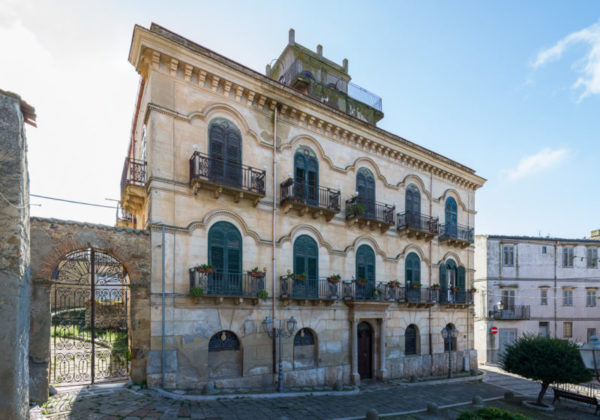Palazzo Guccione Alia

Where is it ?
Palazzo Guccione Alia in via Cardinale in the Rapatello district, the highest and oldest part of the town, is the most important example of residential building of the last century, in Art Nouveau style, in Alia in the province of Palermo.
[code_snippet id=7]
a bit of history …
In the main square, opposite the “Mother Church”, the Palazzo Guccione rises above what was the ancient baronial palace.
The structure dates back to the 19th century and was built by the family of the same name, one of the wealthiest in Alia, in an eclectic style with strong references to Sicilian Liberty from the school of Ernesto Basile.
The balconies of the two upper orders have cast iron railings with phytomorphic motifs of a certain rigidity close to the nineteenth-century styles; the main entrance has a portal with a wrought iron crown and two columns with Corinthian capitals.
The structure is surmounted by a belvedere.
The geometric patterned ornament on the roof of the living room on the first floor is noteworthy, although the walls are in glossy stucco imitating various qualities of marble, and the floor and tiles in colored concrete; the glasses are polychrome and decorated with the family coat of arms.
The doors and windows are inspired by the modernist styles developed by Basile for the Ducrot furniture factory in Palermo.
Alia
Alia is a small town located in the province of Palermo, Sicily, Italy, 80 km from the city. It is situated on a mountain at an altitude of 700 to 800 meters above sea level. Its origins date back to Roman times, as evidenced by archaeological findings, and it was later transformed into a rural settlement during Arab rule.
The history of this town is still subject to study, but it is known that a document from 1296 mentions the Feudo of “Lalia”, which was owned by the Crispo family from 1366 to 1557, when it was purchased by Spanish noble Luca Cifuentes and given as a dowry to his daughter Francesca. Her husband, Pietro Celestri, Marquis of Santa Croce, asked King Philip III of Spain for a license to populate the fiefdom in 1615, but he died soon after. Thanks to the persistence of Francesca Cifuentes Imbarbara, the grant was executed in 1623 and the town was born. The town’s name became Alia in the mid-1700s.
Map of Alia
Recommended book : Storia di Alia 1615-1860
Updated on: 29/01/2023 15:40:52